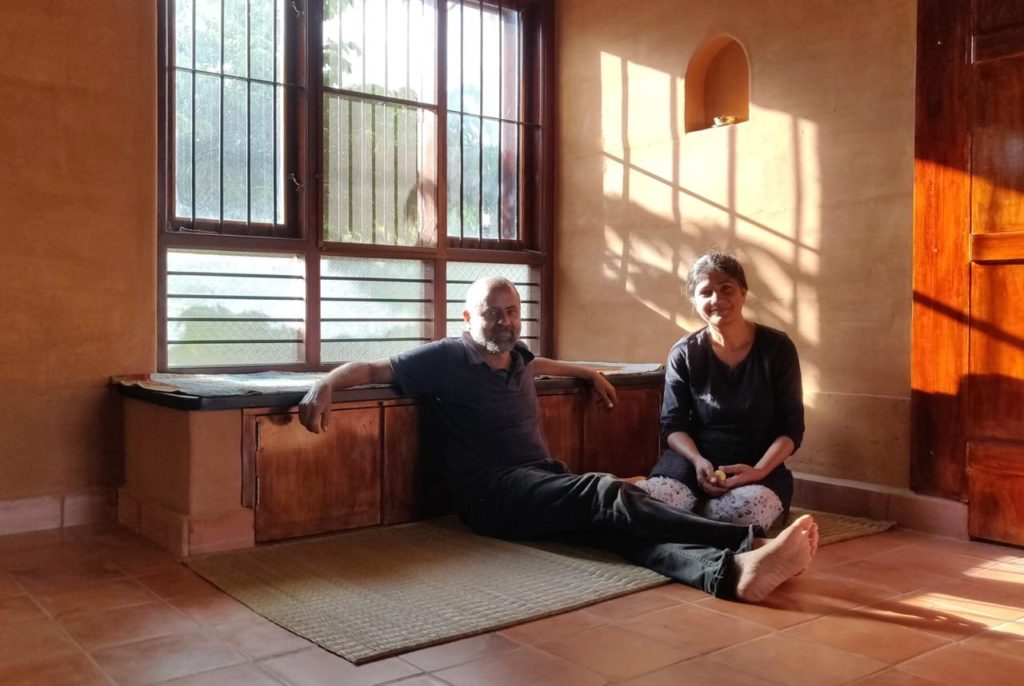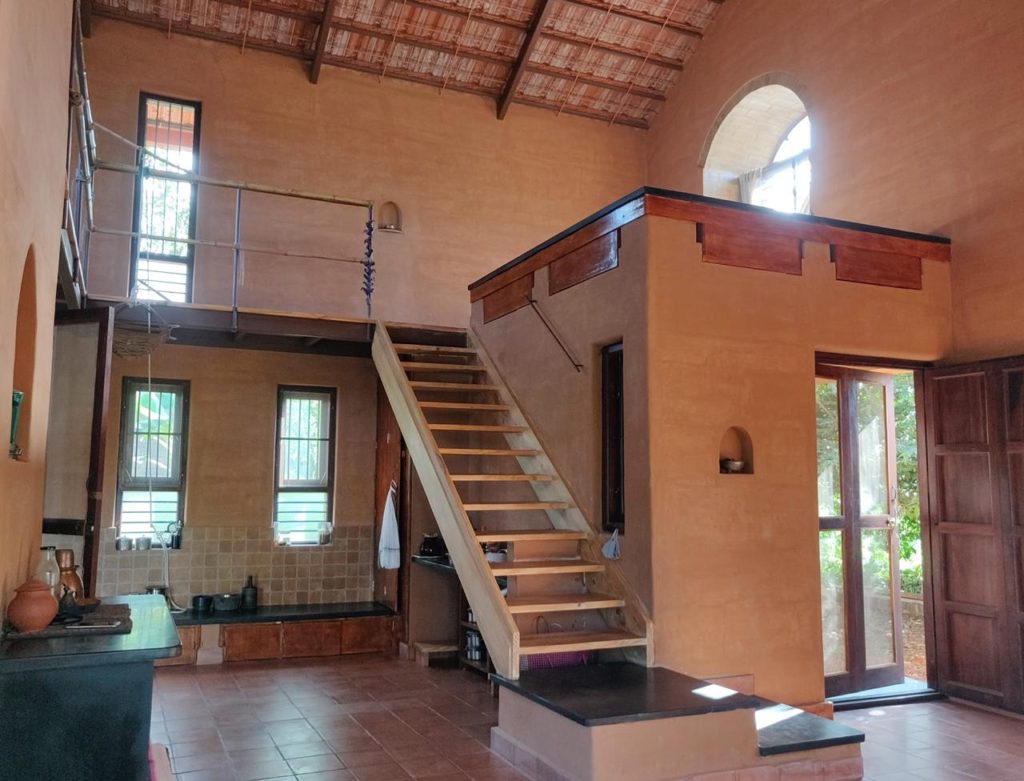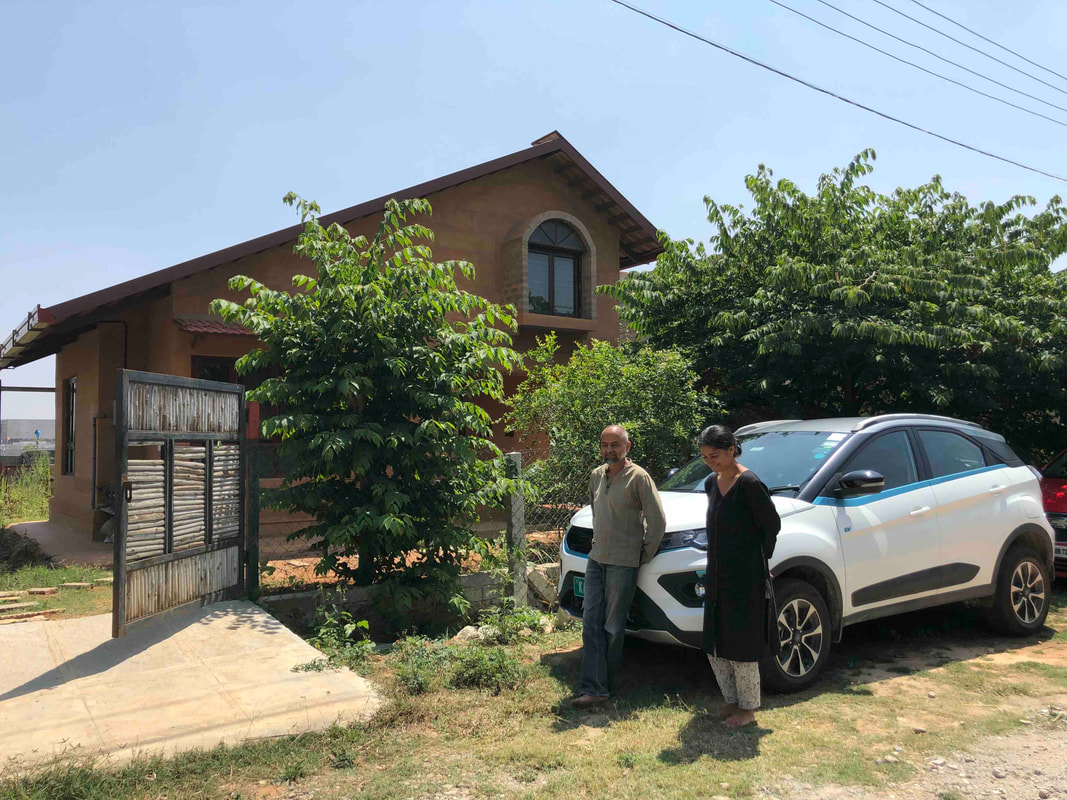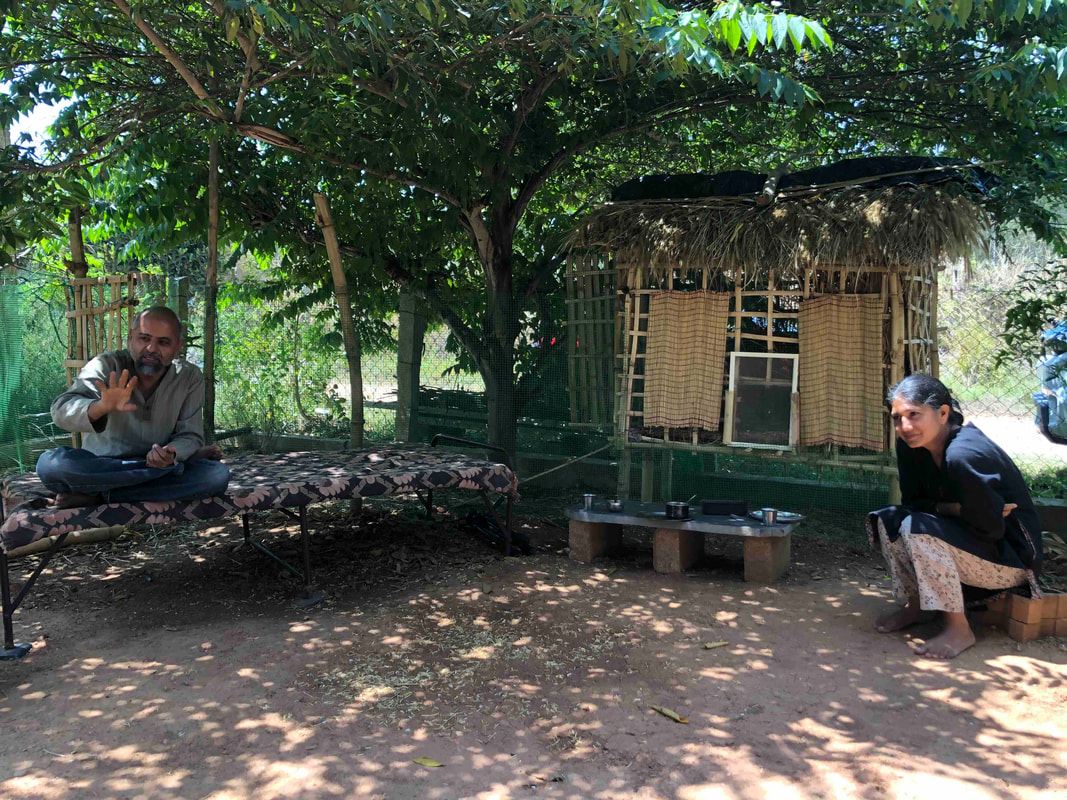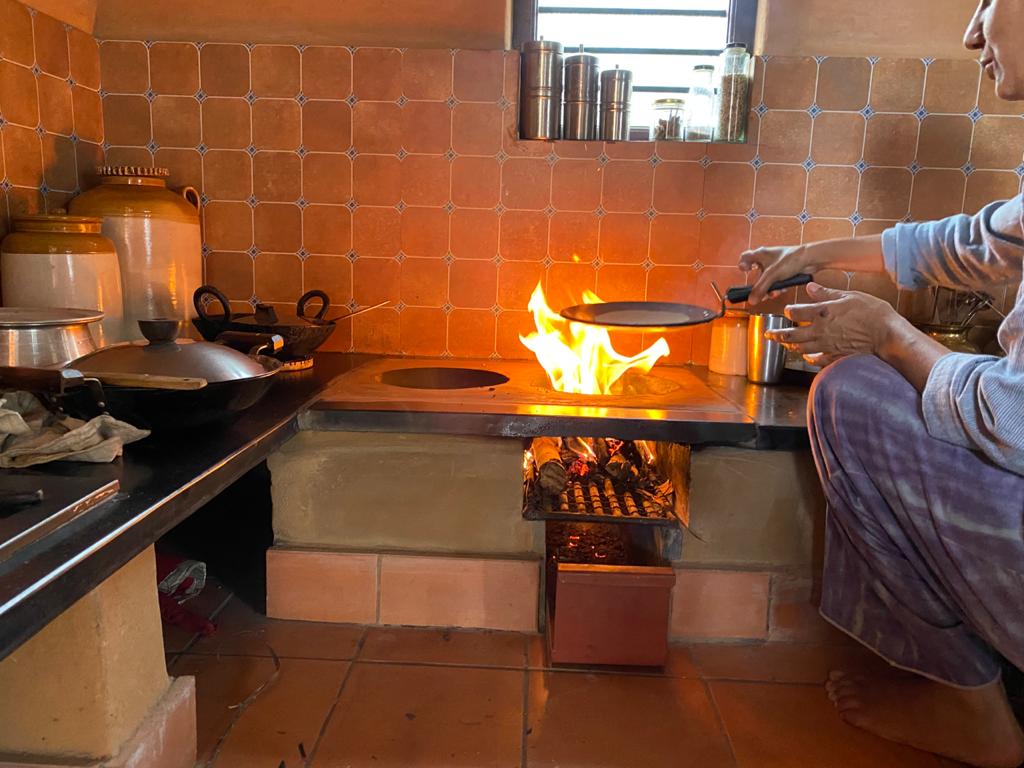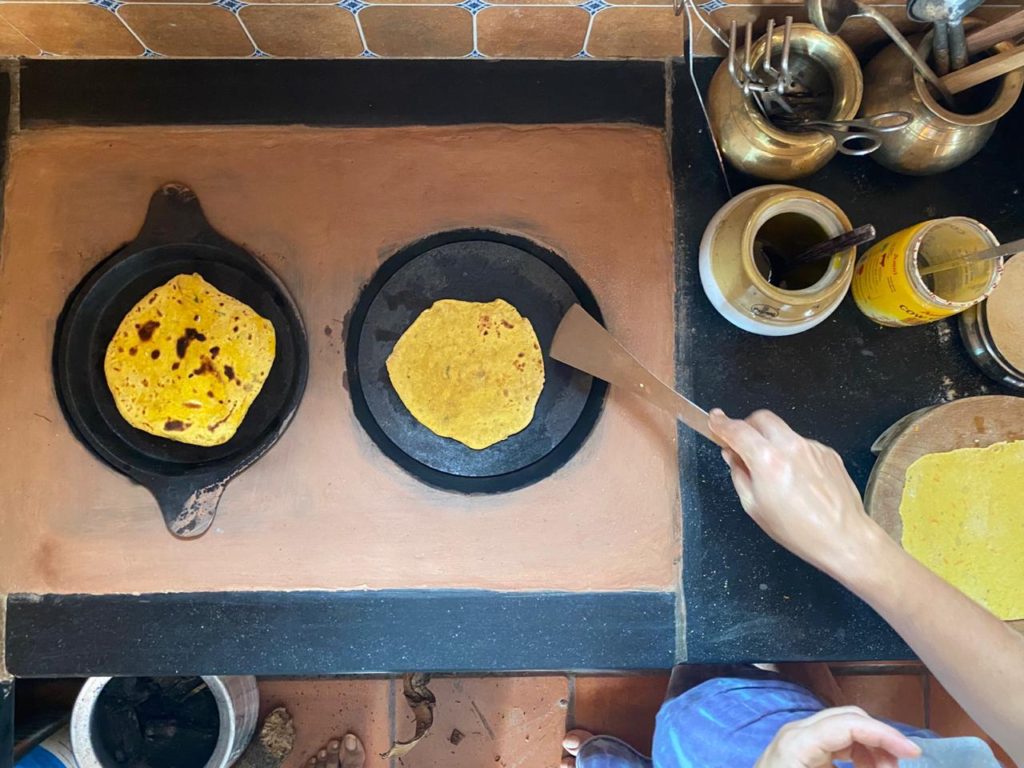By Atul Gopal
Team PluginIndia visited a sustainable home called Amla belonging to Reva and Ranjan. They are attempting to go back to being natives of nature and to reconnect with the elements and mend the broken energy cycles. They also own a Tata Nexon EV. Get some healthy snacks and enjoy the video/writeup below!
Video : Real Life Energy Independence : Sustainable Living & Tata Nexon EV
Reva was India’s first electric car. It was named after Chetan Maini’s mother. So it was nice to meet another Reva, Reva Malik, who drives a Nexon EV. Reva grew up in the hills of Himachal – and shifted to Bangalore from Chandigarh about 20 years ago together with Ranjan, her husband and their daughter. They call Bangalore their hometown, or as we used to say in school, native place. The couples’ parents have also shifted to Bangalore now. As with any Indian family, over the years the house grew bigger, and more cluttered. The Malik's had all the more reason because they were the rare breed of civilization, who were moving to become a joint family in a big city.
And then one fine day, in the middle of the pandemic, Reva and Ranjan decided to become pseudo sanyasis. They left their parents in the comfy family home and walked out to the appliance free mud-house. The realization was that life was becoming zoo-like, more so in the pandemic. Everything is delivered to your home-cage – food, water, energy. Abnormal is the new normal. Normal, which used to be growing and cooking your own food and taking care of your own home, feels abnormal. Moving to the mud-house, for them was about finding their own normal. They now run their firm, Primalise from this mud-house. Primalising, for them, is not about going back, but about going deeper. They help businesses and institutions find congruence. Congruence between purpose and pursuits – helping build strategy that is rooted in cultural ethos.
And then one fine day, in the middle of the pandemic, Reva and Ranjan decided to become pseudo sanyasis. They left their parents in the comfy family home and walked out to the appliance free mud-house. The realization was that life was becoming zoo-like, more so in the pandemic. Everything is delivered to your home-cage – food, water, energy. Abnormal is the new normal. Normal, which used to be growing and cooking your own food and taking care of your own home, feels abnormal. Moving to the mud-house, for them was about finding their own normal. They now run their firm, Primalise from this mud-house. Primalising, for them, is not about going back, but about going deeper. They help businesses and institutions find congruence. Congruence between purpose and pursuits – helping build strategy that is rooted in cultural ethos.
It all began in a very usual manner – an arranged marriage and usual careers. Reva was a nutritionist, later an educationist, and Ranjan started out as an advertising and marketing professional and later on an innovation specialist. Somewhere along the way they began to question all that was considered mainstream. Mainstream lifestyles, mainstream education – they found an alternative school for their daughter (Reva insists on alternative nomenclature for alternative, which this senile writer had promptly forgotten). Reva, in her enthusiasm, also joined this school as a teacher to understand the learning processes first-hand and experiment with them. “True learning is a consequence of living, not an intervention”, she insists.
It was here that a small group of teachers formed a community where they could practice principles of sustainable living. A piece of land was purchased adjacent to Bhoomi College, the school’s sister institute. The land was parcelled out into small plots of 3,000 sq ft – and members started building houses there, mostly following vernacular architecture techniques. About 12 houses have been built so far – and these families call this community their regular home. Reva and Ranjan are also part of a farming community called TVC – Tamarind Valley Collective where 52 families are attempting to revive 100 acres of degraded land through permaculture. Their aim is to regrow forests and revive diminishing rural livelihoods. Their Nexon EV takes them to this place and back on a single charge (175km) with 75 odd kilometres still left in the car!
It was here that a small group of teachers formed a community where they could practice principles of sustainable living. A piece of land was purchased adjacent to Bhoomi College, the school’s sister institute. The land was parcelled out into small plots of 3,000 sq ft – and members started building houses there, mostly following vernacular architecture techniques. About 12 houses have been built so far – and these families call this community their regular home. Reva and Ranjan are also part of a farming community called TVC – Tamarind Valley Collective where 52 families are attempting to revive 100 acres of degraded land through permaculture. Their aim is to regrow forests and revive diminishing rural livelihoods. Their Nexon EV takes them to this place and back on a single charge (175km) with 75 odd kilometres still left in the car!
The mud-house has 8 inch walls – built of rammed earth. The mud it is built with is from their own land which was excavated for the foundation. It was mixed with lime and 4% cement as a stabilising agent. There are two grey-water treatment plants with gravel and reeds which recycle water from the kitchen and the bathroom to the small vegetable plots and the 40 odd fruit trees that the couple has in their garden. The agricultural philosophy that they follow is permaculture. Which means that no external inputs go in. Weeds happily coexist with their vegetable plants and trees. The black water from the toilet gets recycled in a biodigester and the recycled water from it also waters the trees in the compound. No waste water goes down the drain, it is all recycled and reused within the boundary of the compound. It is the same for the kitchen waste which is composted and comes back to the garden soil.
Coming to the electrical world of this house. As expected there are solar panels on the roof. Just enough to power the phones, laptops and a kettle that is part of the limited device armoury at their house. The Nexon EV is powered by the grid – and there is some thought going on for putting up a larger 3 kW solar plant for charging the EV from the roof instead of the grid. There is a 15,000 litre underground tank for rainwater harvesting. The couple also has an emergency AWG – Atmospheric Water Generator, which uses air moisture to condense up to about 25 litres of water a day. The preferred running of this gizmo is night time, when the moisture levels are high.
What hits you most in this house is the absence of lights and fans. Thanks to the mud walls, the house remains at a comfortable temperature. The absence of internal walls and a high roof helps in retaining this coolness. Also, the breathing roof which is built using Mangalore tiles allows for constant air circulation. There is a small sleeping and work area on the mianni – Punjabi for mezzanine. In summers, the ‘bedroom’ shifts from the relatively warmer mezzanine to the cooler lower part of the house.
This accounts for the fan-less existence. But what about the lights? The humans here follow the circadian rhythm. They wake up a little before sunrise – and sleep a little after sunset. So the house bulb is the sun. There are a couple of solar lamps around the house, which get used when their old parents visit. The ambient light around also helps them navigate around the house when it is dark. If you look at older houses they used to have wall niches – recesses built into walls. And this house has many of them – this is where they place their oil fuelled diyas.
Coming to the electrical world of this house. As expected there are solar panels on the roof. Just enough to power the phones, laptops and a kettle that is part of the limited device armoury at their house. The Nexon EV is powered by the grid – and there is some thought going on for putting up a larger 3 kW solar plant for charging the EV from the roof instead of the grid. There is a 15,000 litre underground tank for rainwater harvesting. The couple also has an emergency AWG – Atmospheric Water Generator, which uses air moisture to condense up to about 25 litres of water a day. The preferred running of this gizmo is night time, when the moisture levels are high.
What hits you most in this house is the absence of lights and fans. Thanks to the mud walls, the house remains at a comfortable temperature. The absence of internal walls and a high roof helps in retaining this coolness. Also, the breathing roof which is built using Mangalore tiles allows for constant air circulation. There is a small sleeping and work area on the mianni – Punjabi for mezzanine. In summers, the ‘bedroom’ shifts from the relatively warmer mezzanine to the cooler lower part of the house.
This accounts for the fan-less existence. But what about the lights? The humans here follow the circadian rhythm. They wake up a little before sunrise – and sleep a little after sunset. So the house bulb is the sun. There are a couple of solar lamps around the house, which get used when their old parents visit. The ambient light around also helps them navigate around the house when it is dark. If you look at older houses they used to have wall niches – recesses built into walls. And this house has many of them – this is where they place their oil fuelled diyas.
The entire cooking is done by the couple – and their guests. When you have to do your own farming, harvesting, cooking and cleaning up after, you realise that two cooked meals a day is all you can manage and need to have. After the morning cuppa, which gets made in an electric kettle, house clean-up work begins. Also the prep work for the first meal of the day. By the time the sun starts climbing higher in the horizon, the solar cooker has been loaded for the noon meal time. Their Punjabiyat makes parathas an essential part of their diet. They haven’t cracked a way to make parathas in the solar cooker yet. So there is a wood-and-cow-dung-cake fired chullah which is used for the rotis and the parathas and for the no-sun days when it’s cloudy. The firewood is sourced from the community land and a generous contribution of coconut husk and shells from their Malayalee neighbours literally adds fuel to the fire. The second and last meal of the day is around 1800 hrs as the sun sets.
What I liked most here was their pets – Kaali and Chitti. The hens that are a recent addition to their family. They are like identical twins – except for their tails – which you should have guessed by now is what gives them their names. And yes, there are 5 little bits of good news. The hen family is now raising 5 chicks. Given a chance outside your dinner table, these folks live a life of about 7 years. And yes, they do contribute in their own way to the dinner table (there are no tables here though, you cook and eat squatting on the floor) – a regular supply of fresh free range eggs.
What the couple might not have anticipated however was the cost of these eggs. Kaali and Chitti have been raiding their vegetable patches. “The eggs are just a bonus”, says Ranjan, “the two beautiful beings complete our small ecosystem and have mended some crucial broken cycles – they eat our cooked leftovers and we eat their raw leftovers; they farm the whole day – weeding, picking worms, and scratching and turning soil. Chicken manure enriches our land and above all they bring cheer into our lives.” The two also have a free run in the house – it was fun to have them walking all around and all over us as we sat talking. Chitti was also engrossed in watching Reva on the camera screen as we were shooting the interview.
At the Malik household, except for the chickens, there is no help that comes for domestic chores. And all chores are done sans automation. The watering of the plants is done manually. And so is the farming, chopping firewood, cleaning the house and grinding spices. This is a choice they the Maliks have made. There is no security watchman at this gated community. So the residents have to come off to receive and see off their visitors at the locked gates. As Reva and Ranjan walked back after seeing us off, I reflect on the message that they are giving us through their lives. The time has come for us to de-mechanize and become more human!
What I liked most here was their pets – Kaali and Chitti. The hens that are a recent addition to their family. They are like identical twins – except for their tails – which you should have guessed by now is what gives them their names. And yes, there are 5 little bits of good news. The hen family is now raising 5 chicks. Given a chance outside your dinner table, these folks live a life of about 7 years. And yes, they do contribute in their own way to the dinner table (there are no tables here though, you cook and eat squatting on the floor) – a regular supply of fresh free range eggs.
What the couple might not have anticipated however was the cost of these eggs. Kaali and Chitti have been raiding their vegetable patches. “The eggs are just a bonus”, says Ranjan, “the two beautiful beings complete our small ecosystem and have mended some crucial broken cycles – they eat our cooked leftovers and we eat their raw leftovers; they farm the whole day – weeding, picking worms, and scratching and turning soil. Chicken manure enriches our land and above all they bring cheer into our lives.” The two also have a free run in the house – it was fun to have them walking all around and all over us as we sat talking. Chitti was also engrossed in watching Reva on the camera screen as we were shooting the interview.
At the Malik household, except for the chickens, there is no help that comes for domestic chores. And all chores are done sans automation. The watering of the plants is done manually. And so is the farming, chopping firewood, cleaning the house and grinding spices. This is a choice they the Maliks have made. There is no security watchman at this gated community. So the residents have to come off to receive and see off their visitors at the locked gates. As Reva and Ranjan walked back after seeing us off, I reflect on the message that they are giving us through their lives. The time has come for us to de-mechanize and become more human!
You can reach Reva and Ranjan through their website, www.primalise.com
Read their blog on Minimum Viable Home
Read their blog on Minimum Viable Home

